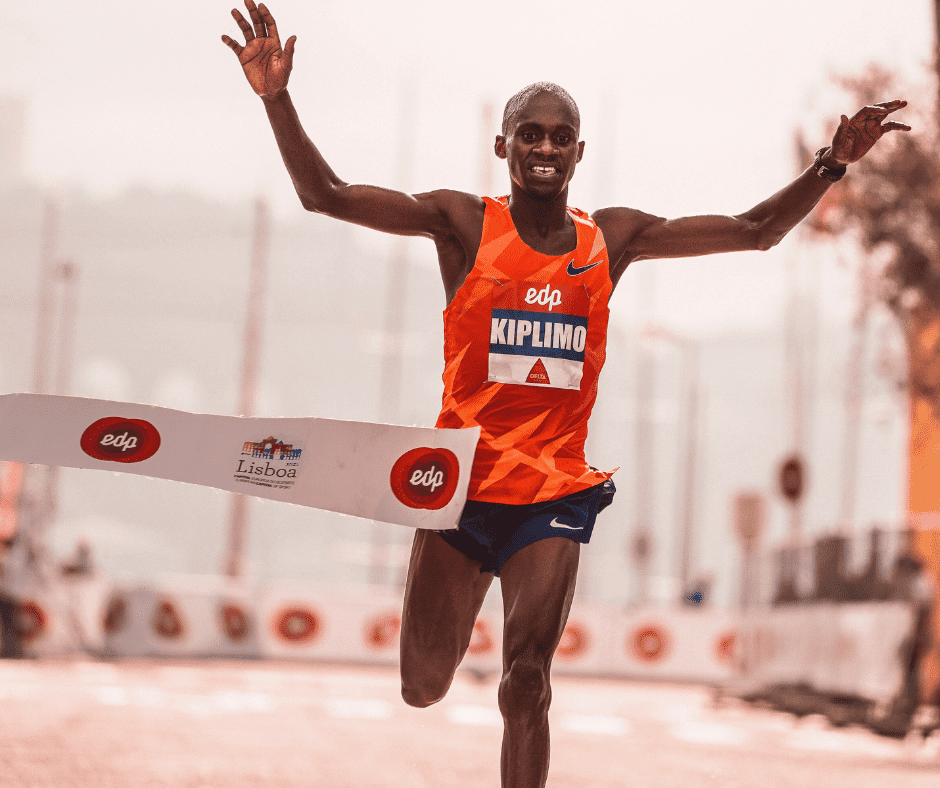So you’re running 10km or 6.2 miles comfortably and you’re ready to make the big exciting leap to running a half marathon distance. Woohoo!
Taking this next step in your running career is going to be one of the best big challenges you’re going to take but it comes with fantastic rewards. We know you’re not going to regret this!
Going from a comfortable 10km to a half-marathon is fairly easy, and you can do that in 8 to 12 weeks without putting yourself at any risk.
We’ll tell you how…

Is It Possible To Run a Half Marathon If You can Run a 10K?
If you’re running your 10km comfortably, hopefully, it means you’re running three to four times a week, which means you can definitely run a half marathon.
This is how it’s possible…
You should aim to do between 6km/3.7 miles and 10km/6.2 miles on three of those days per week, and then on your fourth run in the week you would just gradually build up over the next 12 weeks – it’s very simple.
You can add 1km on that fourth run every week until you get to about 18km, and then back off a little bit just to really freshen your legs up for your half-marathon attempt.
Once you get that long run up to about 15km a week, you can then start to increase one of your other runs. So then you’d have two runs a week of between 6Km and 10km, and build up the second run to about 12km at a push.
As a result, you will go from comfortably running a 10km race or 15km, to a very comfortable 21km.
NOTE: If you are a fast 10km runner, and you can run your easy 10km training run in about 55 min versus if you’re a slow runner and run your easy 10km training run in 75 -80 minutes… there is a significant difference in the amount of time spent running, so that should definitely be taken into account.
So what type of time frame are we looking at here…
How Long It Takes To Go From Running 10km to 21km
The trick is to build up from your 10km to your 21km slowly.

The fact that you can run 10 km means that you’ve got a great base. If you set yourself 12 weeks aside until race day, it means you’ve got plenty of time to build up slowly.
How To Run Your First 13 Mile/ Half Marathon
I would first look at running four days a week and having your stock run somewhere in the region of six to eight kilometers, you could do this three times a week, and then as we mentioned earlier… on your weekend run, you could very gradually increase your distance and do this over 12 weeks.
You should increase the distance on your long weekend run by 1km. For example. 11Km’s this week then 12 next week etc… Until you get to eighteen kilometers.
Note: Remember a recovery/taper period before your half marathon.
Then you can gradually cut back a little bit as you get towards race day so your legs can freshen up.
By the time you’ve reached the eighteen-kilometer mark you’ll be in a very good place, and be more than capable of finishing a twenty-one-kilometer or 13-mile race.
Now that you know how to execute the jump from 10 kilometers to 21 kilometers… Let’s have a look at pacing.
Pacing Your First Half Marathon
The first thing that you need to look at is setting the right goal.
Ideally and obviously you want to set a goal that is feasible for your level, your ability, and feasible for where you are now.
Let’s use an example… Let’s say that your goal is a sub-two-hour half marathon and you decide okay actually I’m going to jump into a sub-1:45 half marathon plan, thinking to yourself that… “If I train harder and faster I’m really just giving myself that buffer because I’m training for 1:45, so I will get to the two-hour.”
What’s going to happen on race day for you is that… In your training, you were not training at the correct intensity and the paces were probably too fast for your easy runs and your long runs, and your interval sessions were probably unachievable.
You set yourself an unachievable goal and put yourself at risk of failure and injury.
By setting a goal too high your pacing will be incorrect which will put your body under stress and place you at a high risk of getting an injury… so you need to make sure that you set a feasible target for your half marathon from the beginning so that your training paces align with your goal.
What Is a Good Time For Your First Half Marathon?
Wondering what a good half-marathon time is?
A good half marathon time depends on several factors, including your age, your fitness level, and your general health.
According to Running Level, the average time for the half marathon across all ages and sexes is 1:50:15.
They state that a good half marathon time for men is 1:43:33 and for women 2:00:12.
Again, it is important to note that a good time for you is relative to your ability, especially if this is your first half marathon. Aiming for a 1:50 half marathon when you are actually a 2:20 half marathon runner is not realistic
10 Common Mistakes People Make During Their Half Marathon Training
- Starting Too Fast
- Not Running Your Easy Runs Easy Enough
- Not Cross-Training
- Not Strength Training
- Not Listening To Their Bodies
- Losing Motivation During Training
- Skipping the Long Runs
- Not Recovering Correctly
- Changing up Your Nutrition and Hydration
- Not Following a Training Program
Starting Too Fast
Before starting your training and setting your goals you should have a proper assessment of where you are in your fitness levels and if your goal is reasonable. This is something that would be great to chat with a coach about so that they can advise on how much volume and speed is a good idea for you.
Not Running Your Easy Runs Easy Enough
Easy runs are here to help develop your aerobic system. Easy runs are typically 1 hour 15 minutes or less and need to be 5 to 20 seconds faster than a recovery run to be considered easy enough.
The purpose of the easy runs is to allow us to continue to develop aerobically to continue to get fitter but to give the muscles tendons and ligaments enough time to build up repair and get stronger before we get to our next very hard session.
To touch on your heart rate, it should be between 70 and 75% of your max heart rate or 80% of your threshold heart rate.
If you run your easy runs too hard it compromises your body’s ability to recover because it’s just adding too much load so you’re not going to be able to run your hard runs fast enough because your legs will be tired and you won’t be getting the full benefits you should be.
The thing about easy runs is yes… You could probably run them a little bit too hard and still be getting the right physiological adaptation but you are beating yourself up because you are doing too much damage to the muscles the tendons, and the ligaments and that is ultimately what then compromises your ability to run better on your so-called quality days.
You’ll get exactly the same physiological benefit if you just back off by 15 to 20 seconds per kilometer and you’ll still be in the right zone and still be working the right physiology but your legs are going to thank you for it and they are going to recover faster.
Not Cross-Training
If you’re like most runners, the chances are probably quite high that you’re on the lookout for ways to keep improving your running… right?

Most people jump to the conclusion that to improve, they need to run longer sessions, longer distances, and do more of everything…
Cross-training is a great way to work different muscles in the body that one normally wouldn’t. Cross-training allows more training without eccentric contractions while reducing eccentric load, meaning less cost on the body.
Revealed: How To Swim Your Way To Becoming A Better Runner
Not Strength Training
Strength training is extremely important for runners, for two main reasons. The first is for injury prevention, and the second is to improve your running performance and make you a faster and more efficient runner
If strength training is what you’re after, grab a free-running strength plan here.
Not Listening To Their Bodies
It’s simple. Pain is NOT a normal part of any training.
Losing Motivation During Training
Yes, there will definitely be points in your training when your motivation starts to deplete. You might have days when you just don’t feel like running.
Days like this are a perfect example of why including cross-training and strength training gives you the variety you need to help keep you on track and ready for your next run.
Skipping The Long Runs
The most important outcome of doing your long runs is to build your endurance to help develop your body’s ability to provide energy across the spectrum of distance.
Long runs also play an important role in improving your running economy, this teaches us to be on the move for a long time, to be on our feet for a long time, and psychologically prepares us for longer distances.
On long runs, we can also experiment with nutrition and check which things work and what we like and what we don’t like.
Not Recovering Correctly

Running fatigue is a physical state of exhaustion that occurs when one runs too hard or runs long distances regularly. Without the body recovering fully, causing fatigue is carried over to the next training session. It takes time for the body to repair the muscle fibers and make improvements after sessions.
Every time you go for a run, your body has to adapt to get stronger…
When you run, you aren’t just building your stamina and strength; you’re also breaking your body down, causing a tiny amount of tissue damage with every step.
So, allowing yourself time to recover after your runs is what makes it possible for you to come back better adapted for your next run.
Changing up Your Nutrition and Hydration
This may seem obvious but it’s more important than a lot of runners think…
You need to practice your hydration and nutrition plan way before race day… this is to avoid stomach issues and dehydration, Your body and mind will get used to running on the food and gels you practice with so that come race day there are no surprises.
Not Following a Training Program
By following a training program you receive a proven, science-backed 12-week 21k training plan that shows you not only what training to do every day, but exactly what pace that training should be done at so that you avoid injury and ensure you’re not over- or under-trained for come race day.



Comments are closed.